This project describes a homemade spectroscope design I came up with some 8 years ago. Since that time I periodically scoured the internet regarding this topic, but have never found similar design for diy spectroscope, so I am describing it here now.
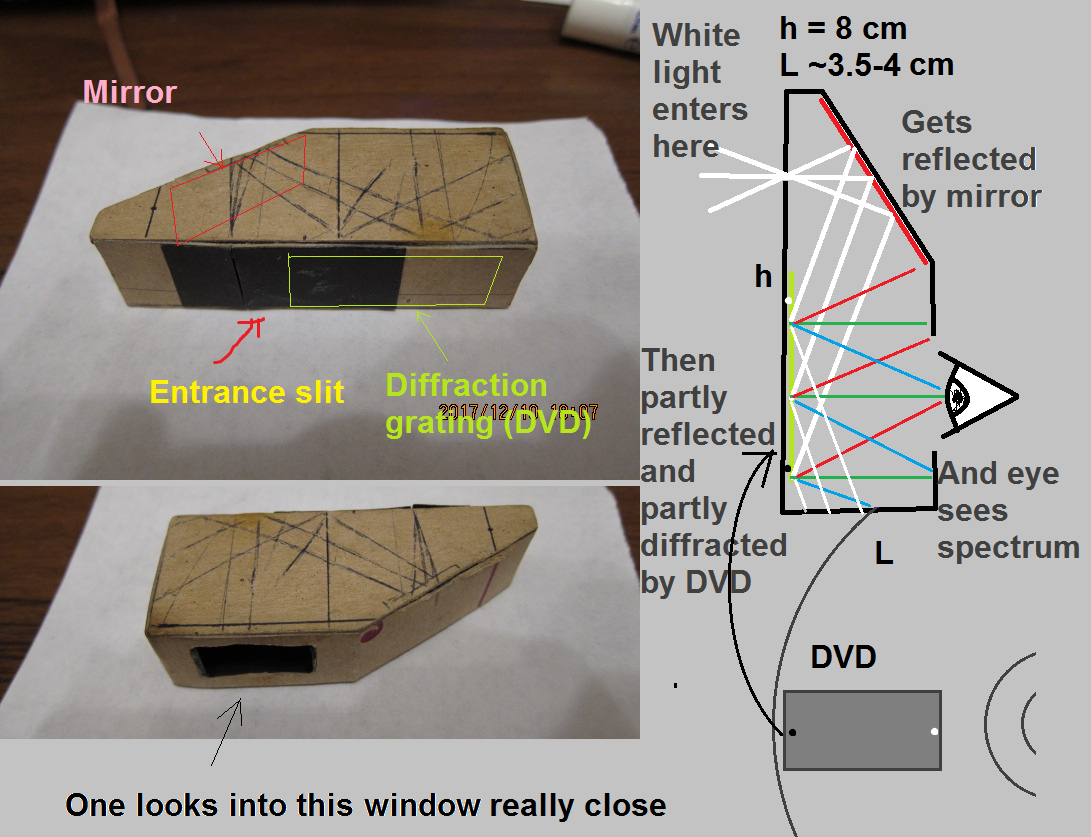
Most projects I've found make bulky specroscopes from cereal box or pvc tubing. It seems to me on lazy side because such schemes avoid much work (and maybe some hasards related to cutting and glueing) and precalculation. It makes them easier to do and more approachable for wider public, but to my taste it is not enough. By slightly more careful and rigorous approach, one can make a very portable spectroscope, which could be carried everywhere, and be of quite high spectral resolution (can resolve lines less than 1nm apart).
Mirror
The trickiest (and maybe hazardous) part of construction of this portable spectroscope, I think, is to cut mirror to appropriate dimensions. The best, of course, would be front-metallized mirror, but thin usual one will do too. Such mirror can be sourced from little pocket ones women use when applying cosmetics. To cut it to appropriate size, one have to know glass cutting technique -- first, one have to scratch a groove, using glass cutter instrument (or in lieu of it, carpenters nail or something similarly sharp), and then break the glass mirror along this groove.
Slit
As for entrance slit, it have to be quite narrow, some 0,1 mm. It could be made of razors, or, as pictured, from well cut black cardboard. It is also could be made from mirror, just scratch coating on back with sharp instrument (this was in my first, original instantiation of spectroscope).
Diffraction grating
This is where "DVD" comes from. So, basically, spectroscope uses a piece of DVD as it's sole dispersing element. Despite it's humble origins, it is quite good at it's job. That said, it has it's drawbacks -- first and foremost, it's grooves are not linear which leads to distorted image. But this curvature actually plays beneficial role, as it focuses diffracted light and makes spectrum seem to be at 30-40 cm from eye (despite actual distance light travels from slit being mere 10 cm), which makes it more comfortable to look at.
To obtain this grating one have to carefully split blank writable DVD into its two halves along the reflecting layer, and cut a rectangle from a part with reflecting coating so it's longer length runs along radius. This could be tricky and may need several trials.
One benefit of this design, apart from being pocketable device, is that one using it sees spectrum of light source which is located in front of him/her.
On the photo below is the first spectroscope of this design, while I was disassembling it for another project. One can see it's insides and deduce how all assembly is made.
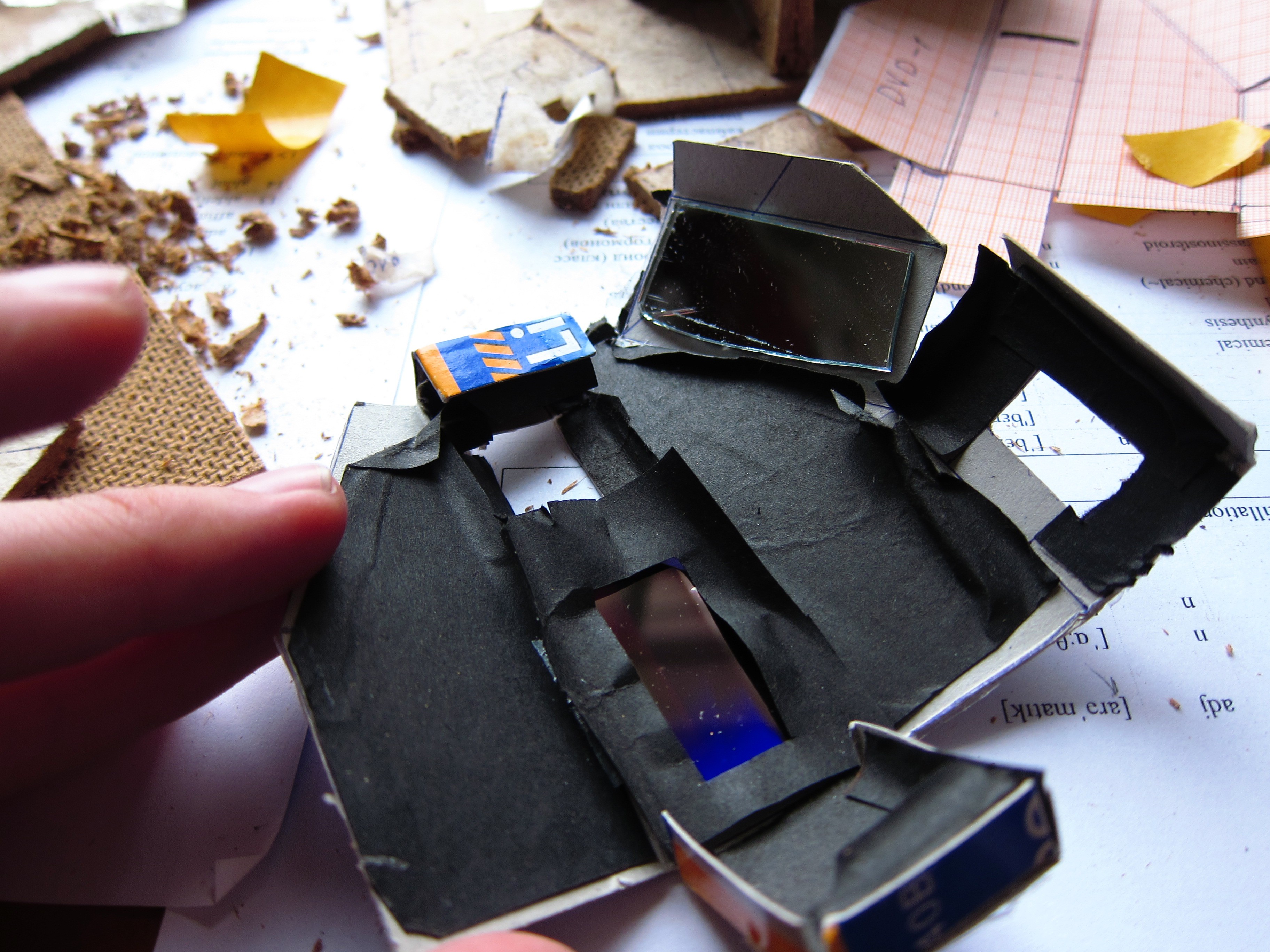
Below are photos of different spectra made with that first spectroscope instantiation.
Compact fluorescent lamp:

Standard fluorescent tube lamp:

Streetlight High pressure sodium lamp:
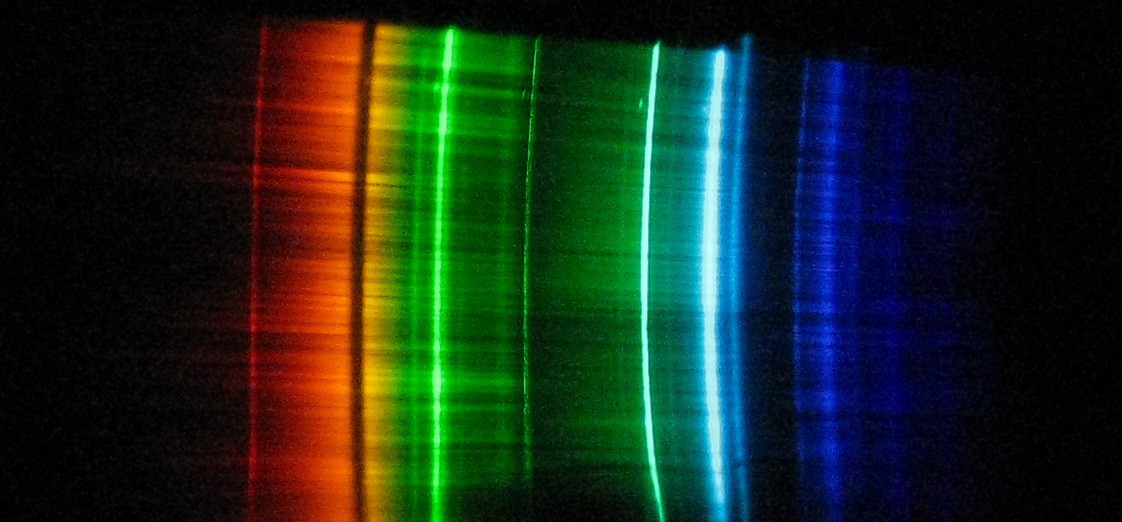
Blue sky:
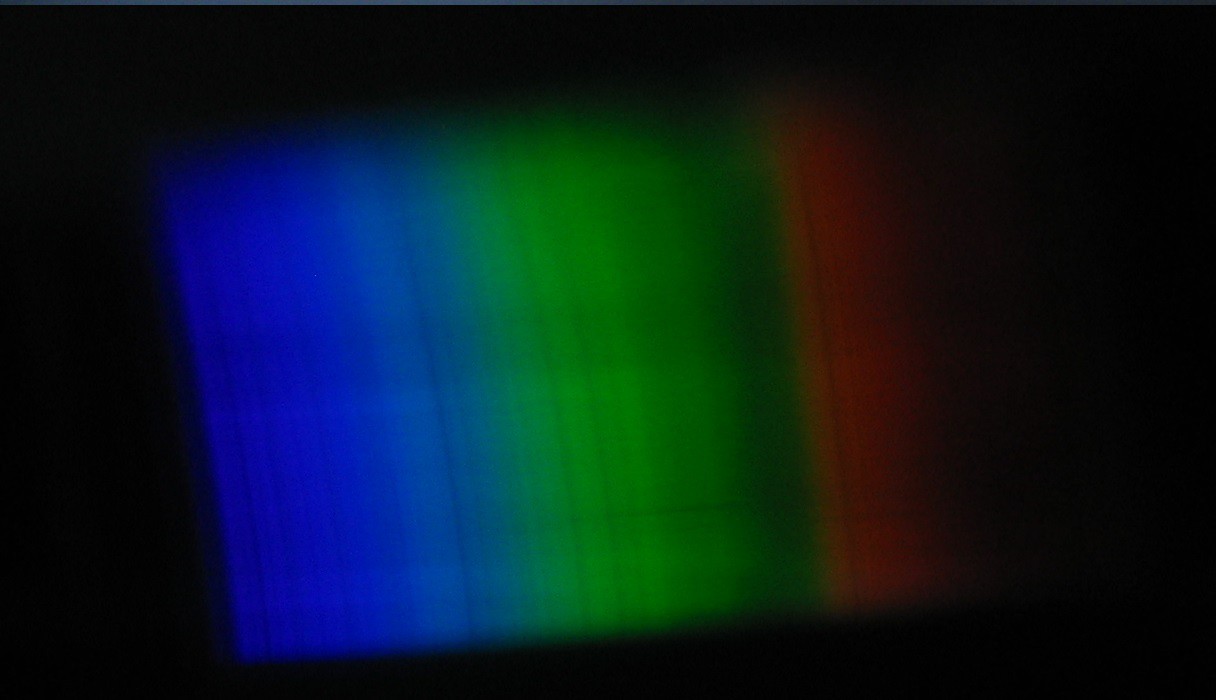
The Sun (direct view, maximum light spot in near infrared):
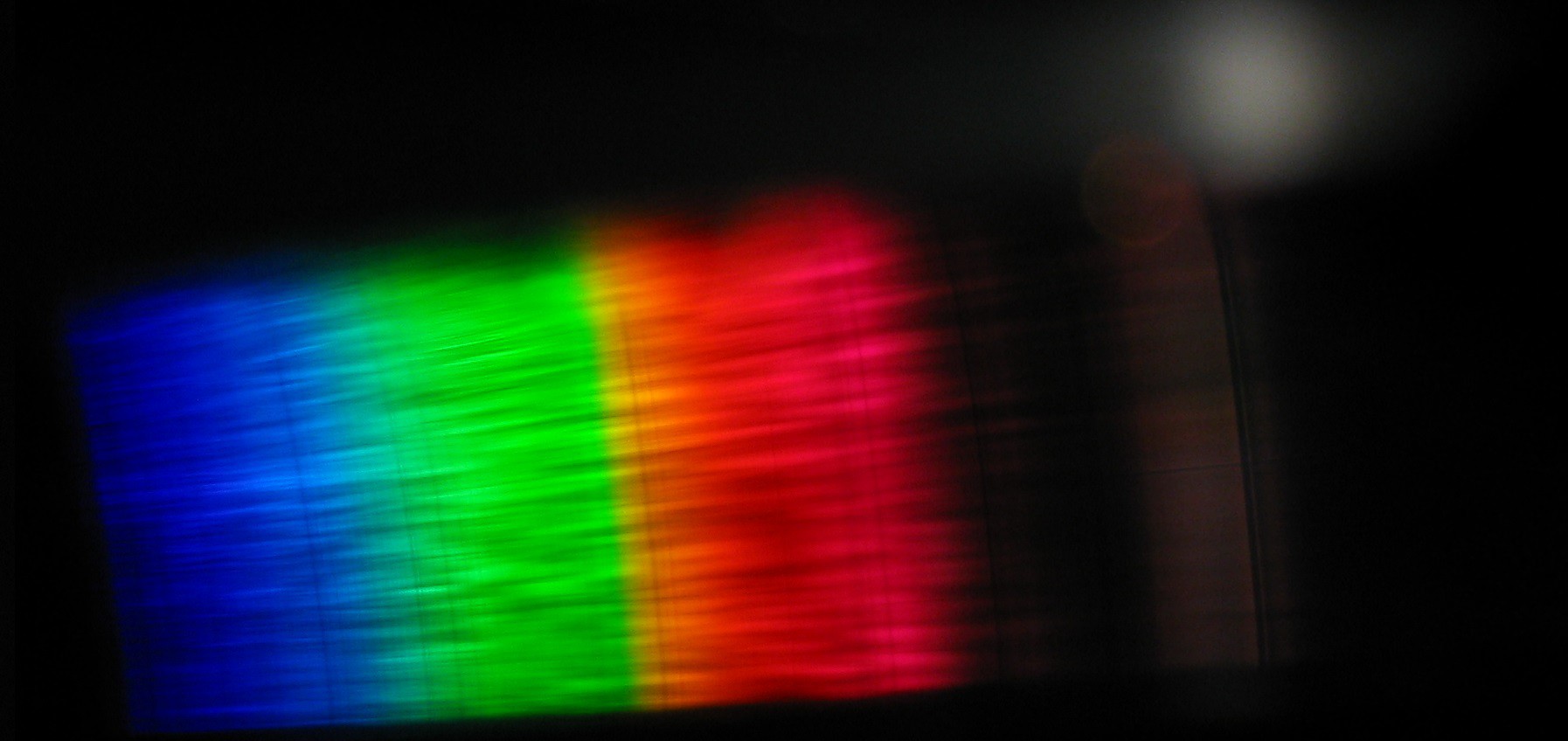
 Pavel
Pavel
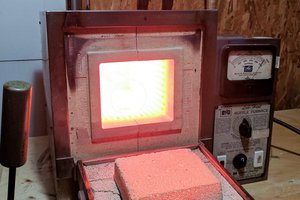
 polyfractal
polyfractal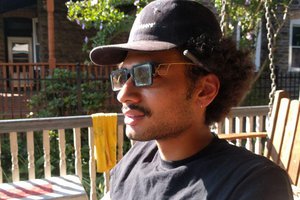
 David Troetschel
David Troetschel
 Zachary Marlow
Zachary Marlow
 Brainy.Baboon
Brainy.Baboon
Very clever design you have here :)